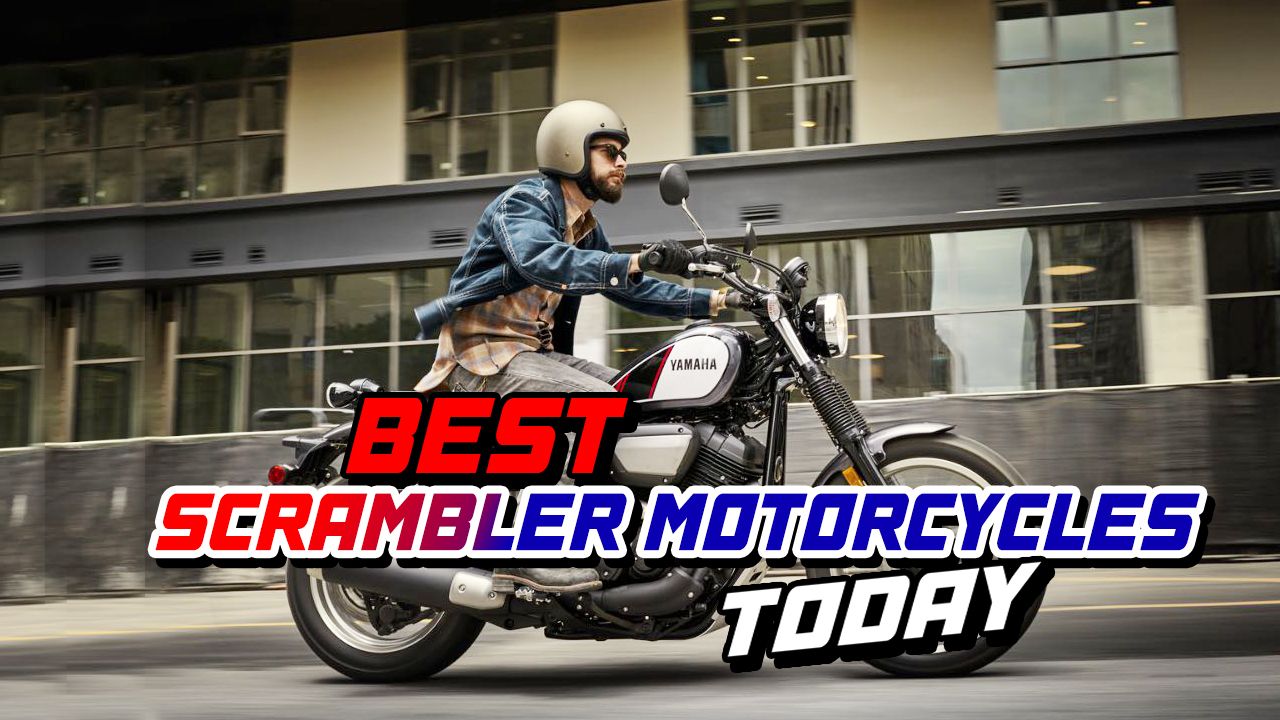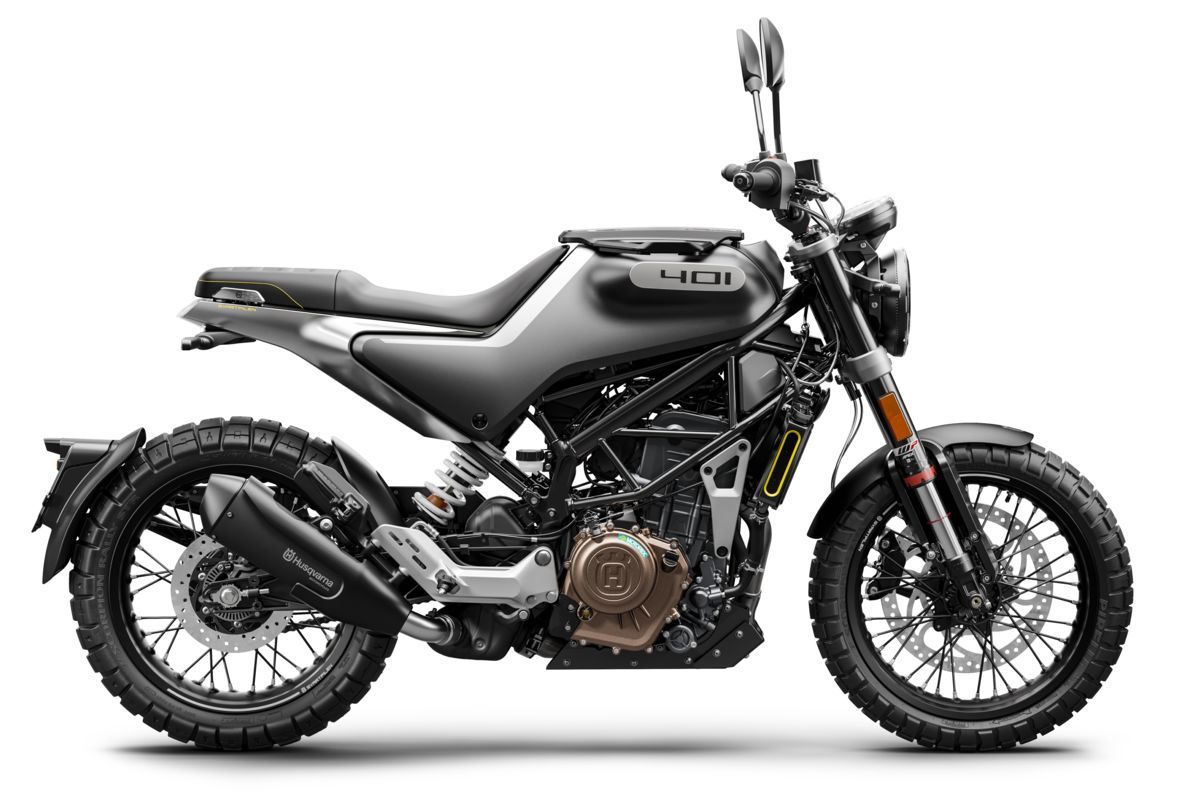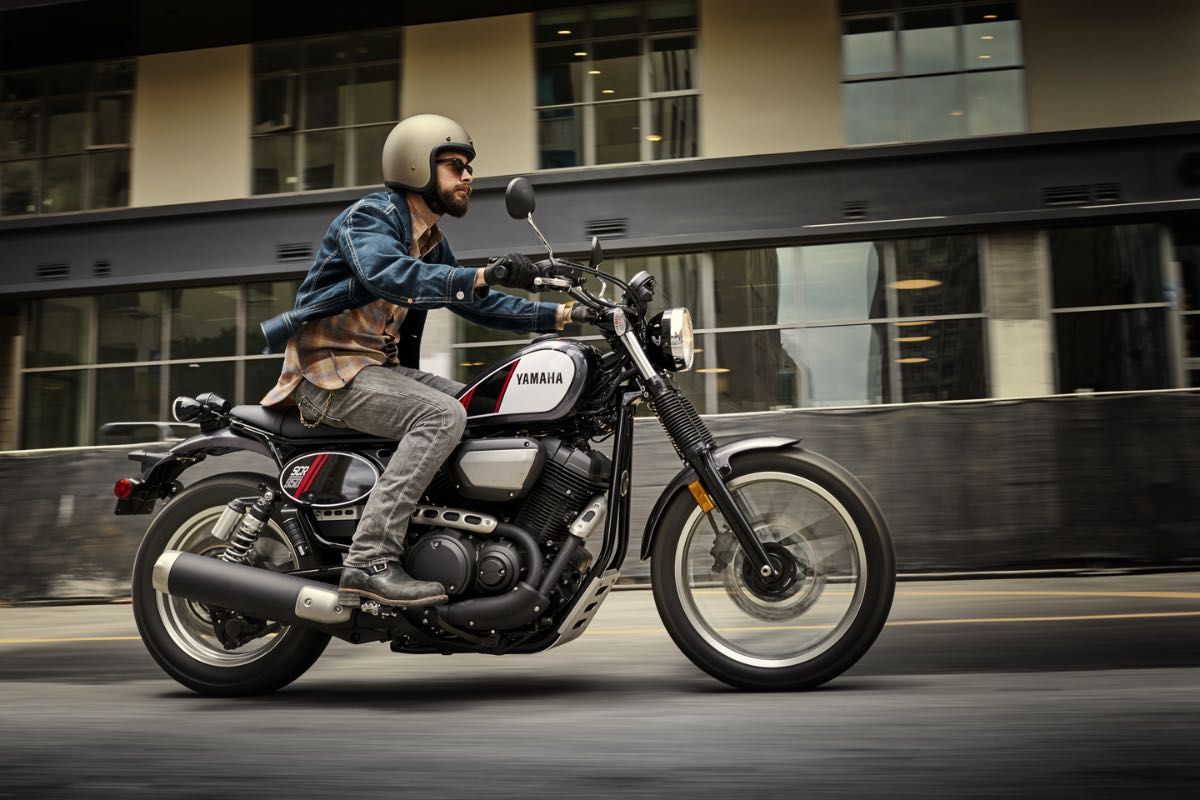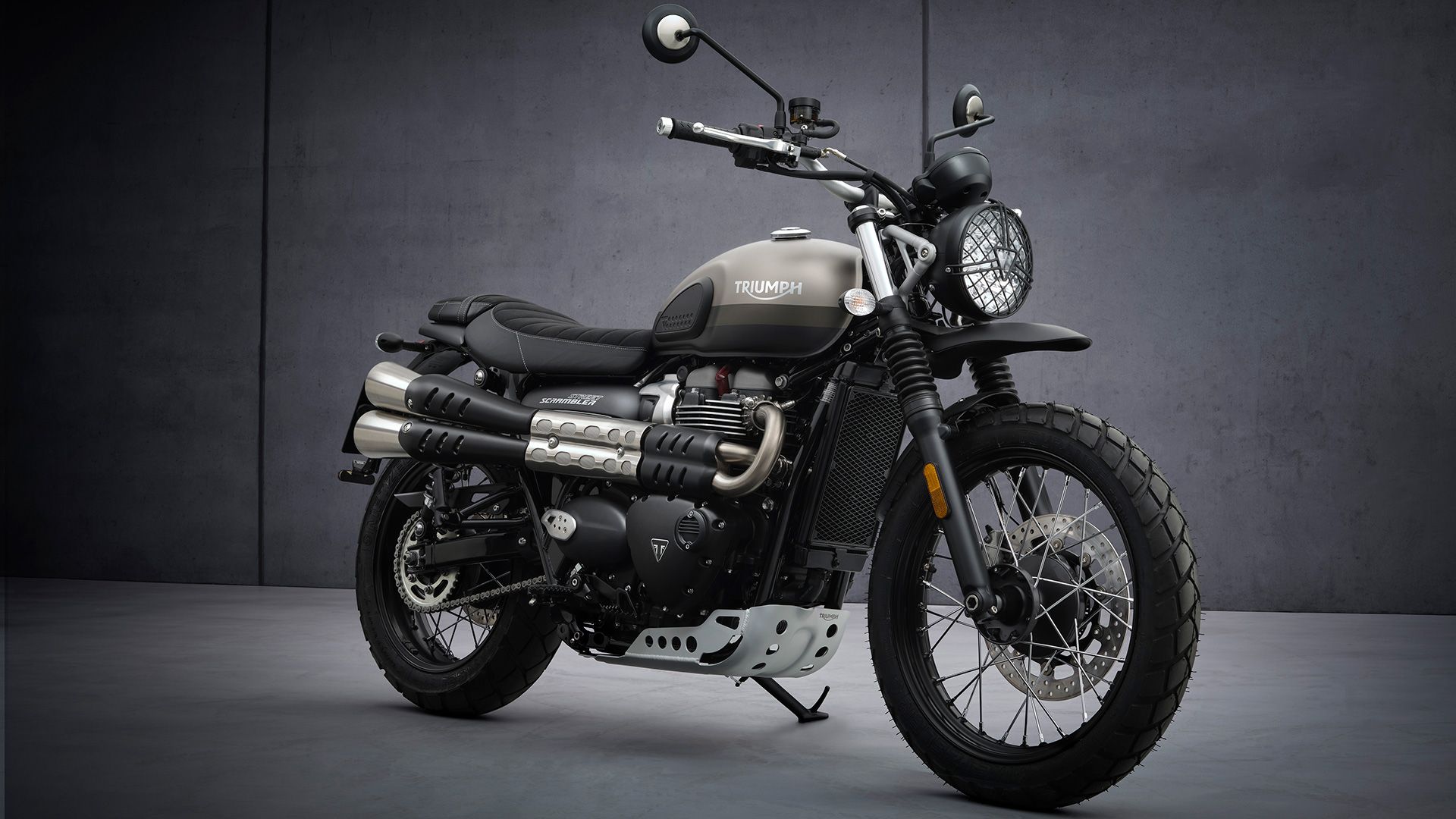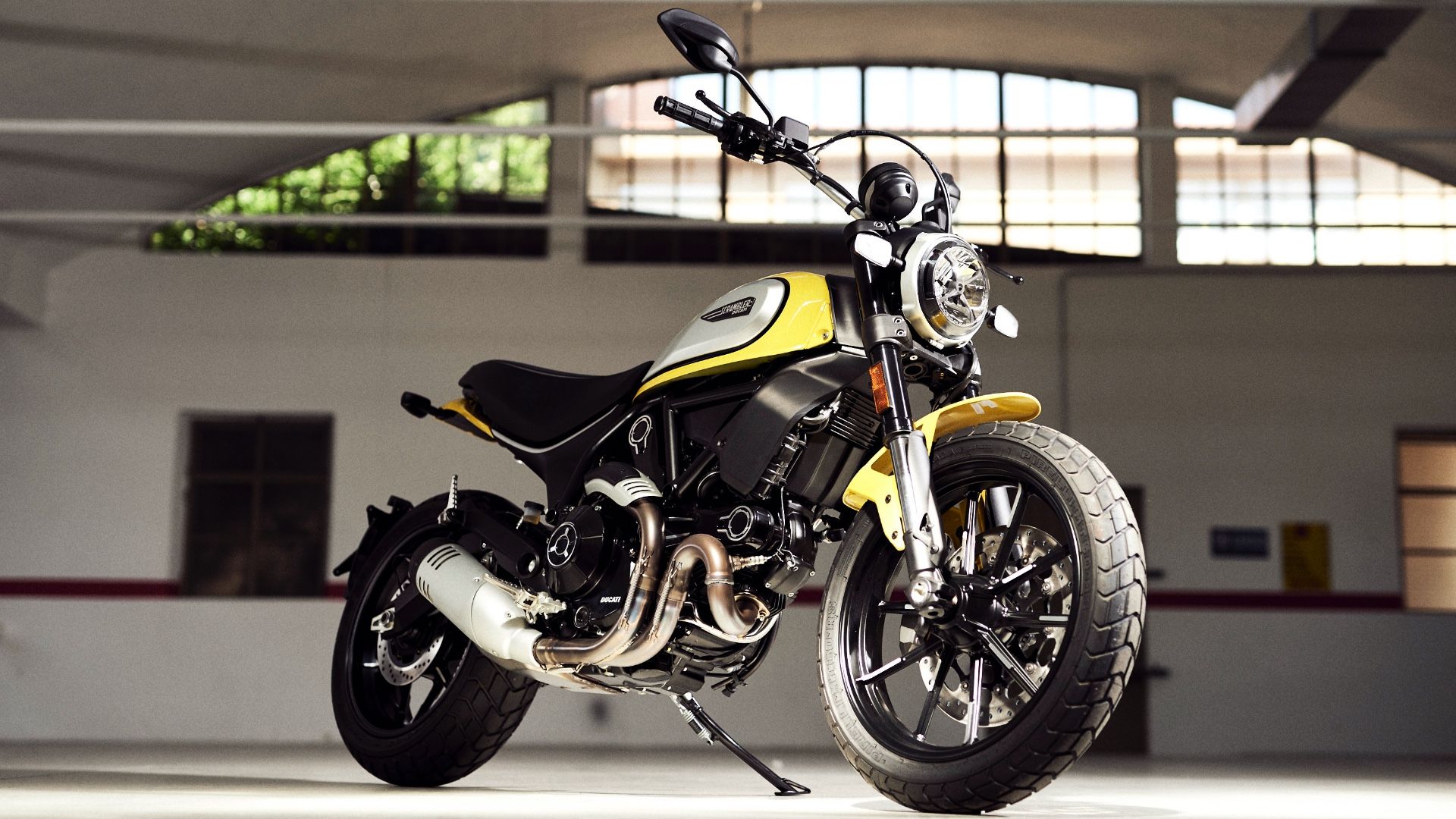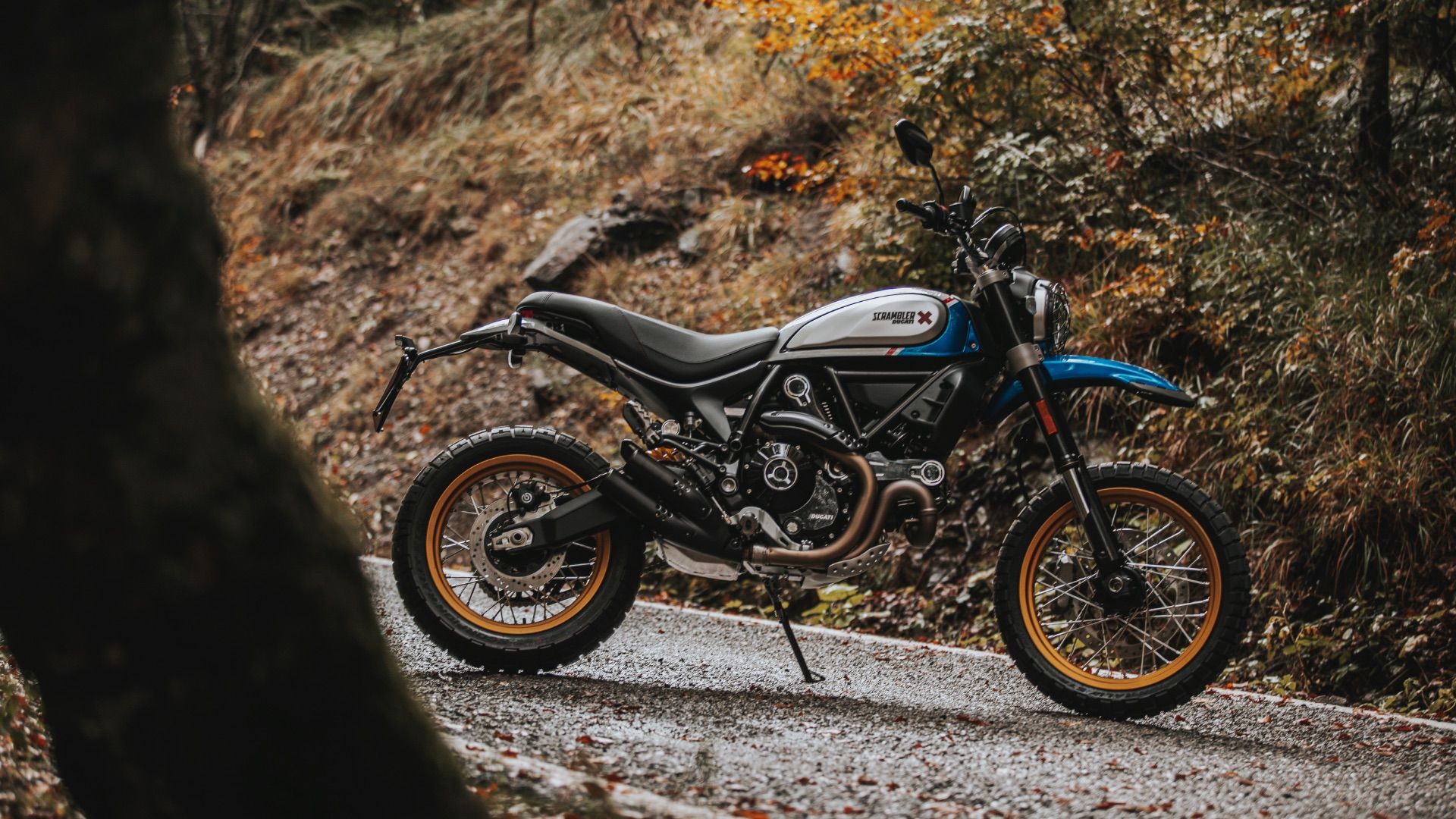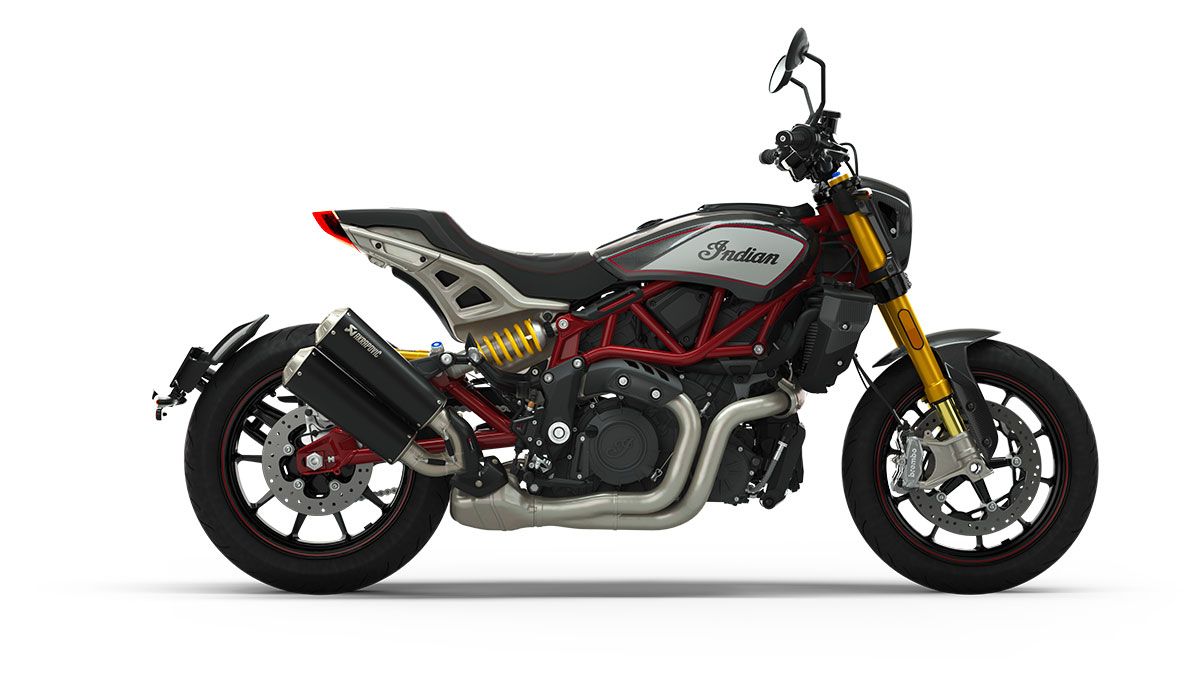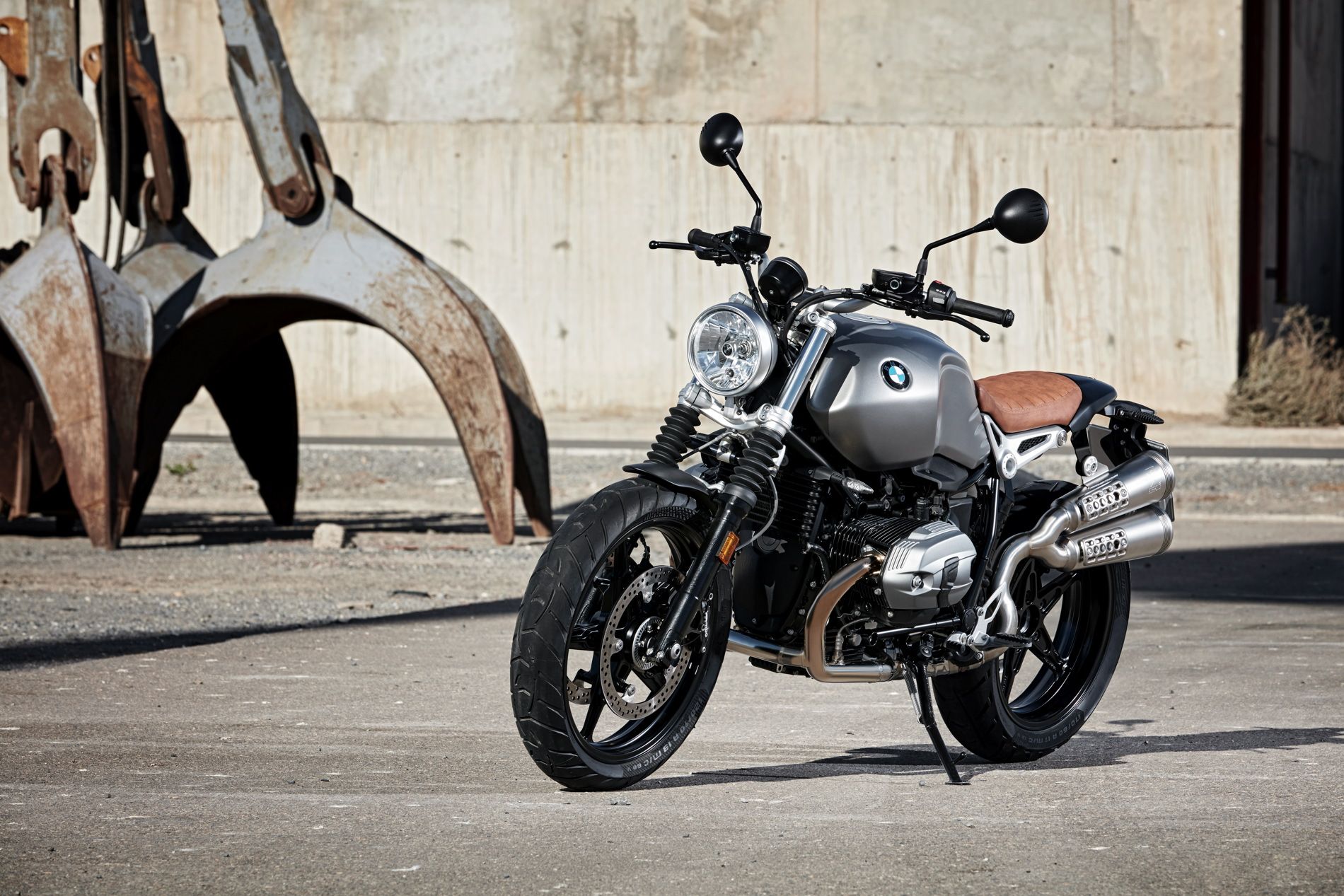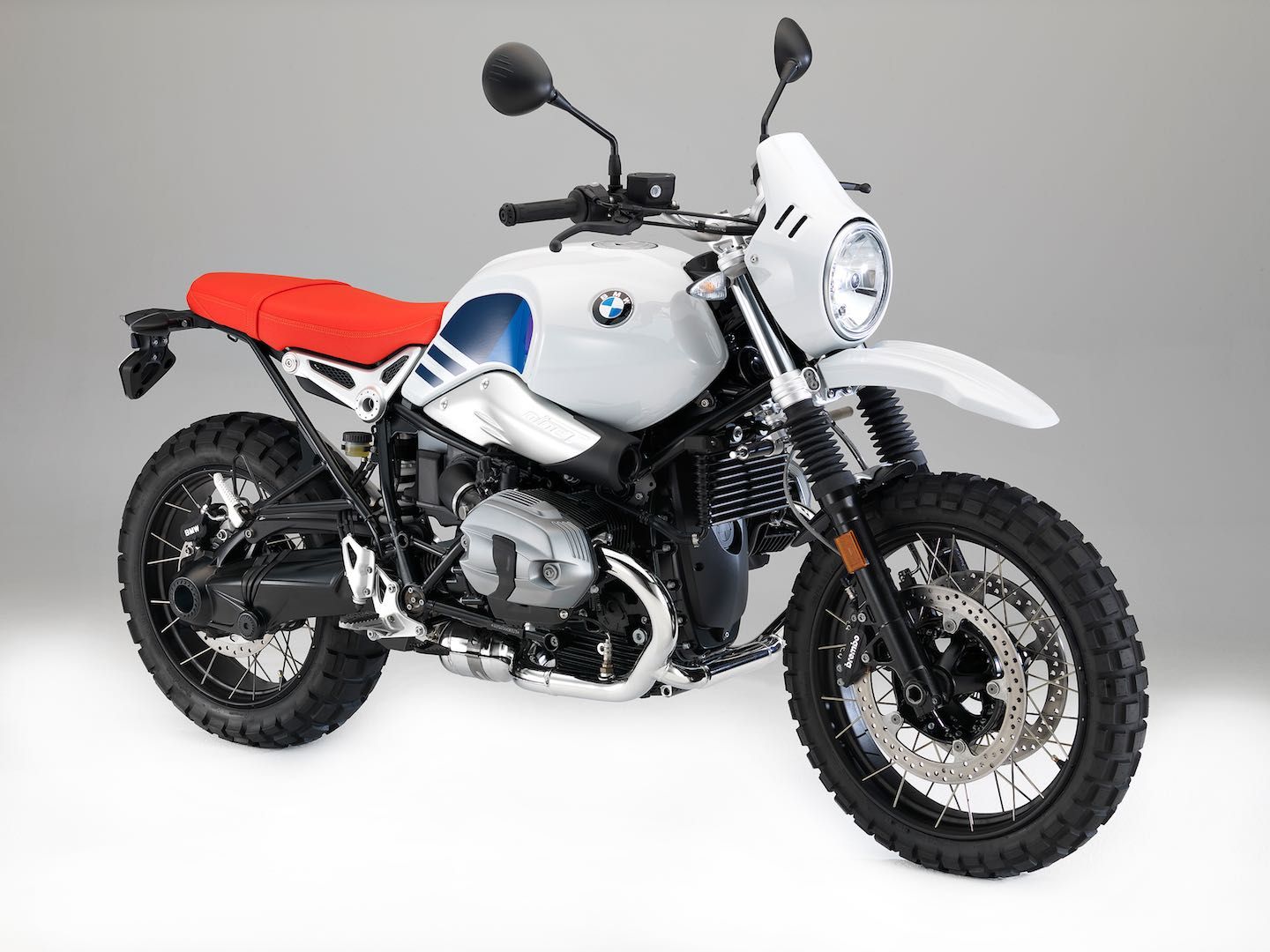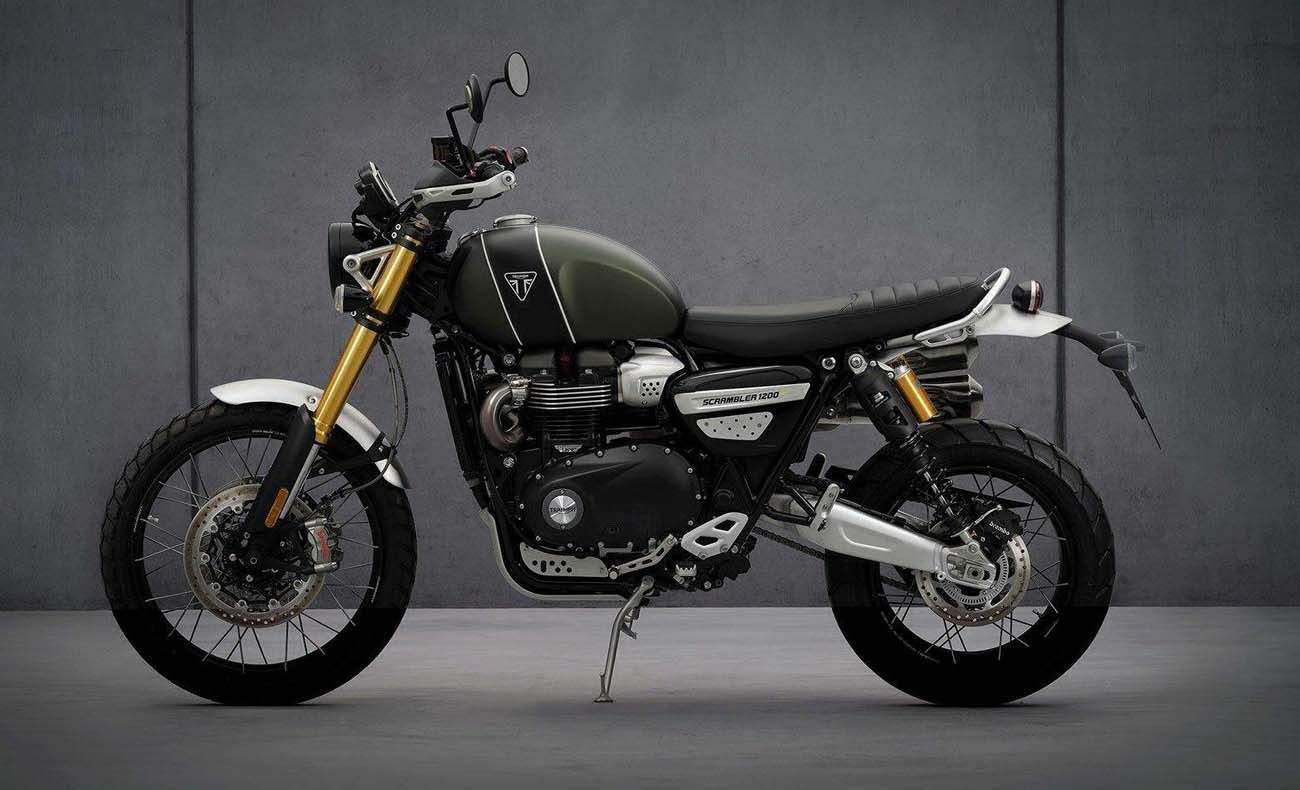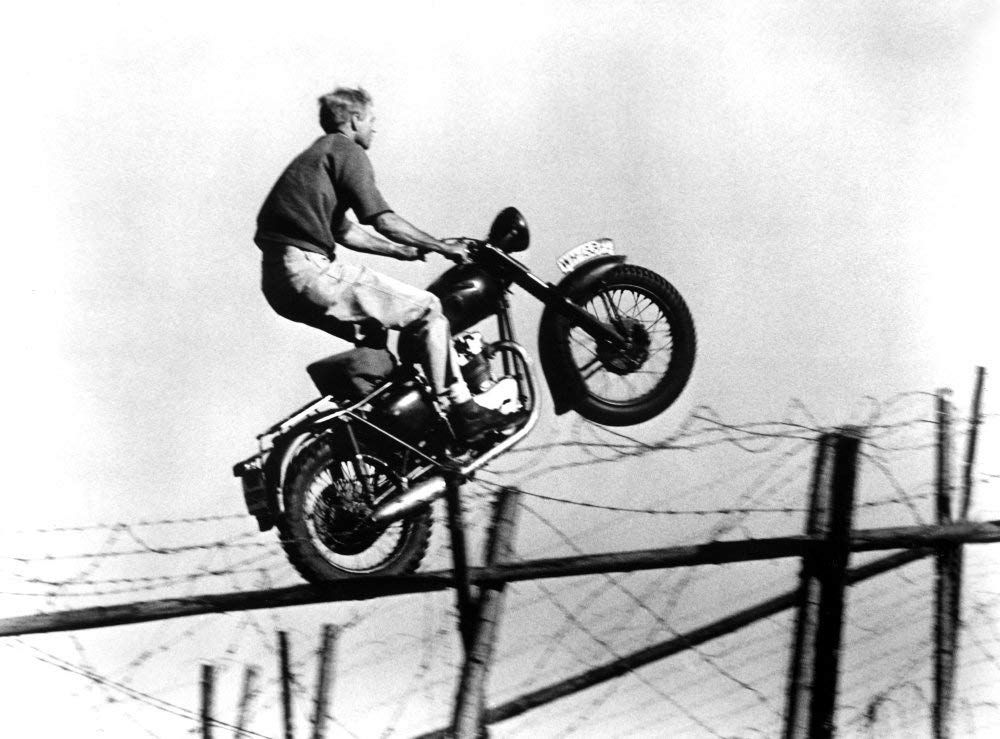Scramblers are the modern equivalent of Steve McQueen jumping the fence in The Great Escape: cool to look at, cool to ride. There's a good choice out there right now but which one is the one for you? Here's a list of the best Scrambler motorcycles available today.
Husqvarna Svartpilen 401 - $5,399
Husqvarna’s first foray into road machinery under ownership by KTM was a startlingly modern piece of design hiding KTM running gear. Two variants were offered - the cafe racer Vitpilen and scrambler Svartpilen.
Powered by the single-cylinder engine from the KTM 390 range, performance was perfect for the urban jungle which is really what it was designed for, despite the off-road trinkets such as spoked wheels with knobbly tires, sump guard, and wide handlebars.
It is surprisingly well-equipped on the mechanical side - slipper clutch, ride-by-wire throttle allowing for alternative engine maps and traction control, and high-end WP Apex suspension front and back. Weighing in at only 335lbs, this would be a brilliant little off-road bike if it wasn’t for the low 5.7-inch ground clearance.
With proven mechanicals and those futuristic looks, the Svartpilen 401 is the best argument for style over substance yet. Better still is the bargain-basement (in this company) price.
2022 Price:
- Husqvarna Svartpilen 401 - $5,399
Yamaha SCR950 - ~$9,000
Something a little bit different from Yamaha. Basing a ‘scrambler’ on a cruiser platform might not seem like the most obvious route to off-road ability and you’d be right. But what the SCR950 lacks in credentials, it more than makes up for in personality.
The SCR makes use of a steel tube frame, 41mm forks, short-travel twin rear shocks, a single front disc, and the same 51bhp air-cooled 60° V-twin as the XV950, XV950R, and XV950 Racer series. But, this translates into a ‘scrambler’ better than you might think.
If anything, the SCR is closer to an old-school scrambler than any of the others, being a production model re-purposed for another role.
Naturally, the SCR rides higher than the donor bike, thanks to a new rear subframe that raises the seat height to 830mm from 690mm. New 'bars and footpegs complete the picture and give the SCR a much more upright riding position. Having said that, ground clearance is limited and the exhaust is still mounted low.
It remains a fairly basic motorcycle but that only adds to its charm: there’s nothing to get in the way of enjoyment. Braking is a basic single-disc set up, the tank holds 13 liters, wheels are wire-spoked and there are a couple of scrambler styling cues to complete the package.
The only problem is that it isn’t available new anymore. Mind you, that does mean that you should be able to find low-mileage examples on dealer’s floors for very reasonable money, especially when compared to other bikes on this list.
Price when new: A slice under $9,000
Triumph Street Scrambler - $11,295
Triumph not only started the ‘modern classic’ movement in 2001 but also, in 2006, resurrected the factory scrambler concept with the first Scrambler 900, modeled closely on the 1960s TR6C Trophy Special. High exhausts and chunky good looks couldn’t hide the woeful ground clearance so this was purely a street scrambler.
In 2016, the Street Scrambler replaced the original Scrambler, with the uprated 900cc engine from the Street Twin and was further refined in 2019 and again in 2021, becoming Euro5 compliant at the same time. Still very much a styling exercise rather than a proper off-roader but with a good chunk of personality and typically solid Triumph build quality.
2022 Price:
- Triumph Street Scrambler - $11,295
2022 Ducati Scrambler - $11,695
The Ducati Scrambler arrived in 2015 as a stand-alone brand. Taking inspiration from the 250/350/450cc Scramblers (sometimes called Jupiters in the U.S.) built between 1962 and 1974, the new models used an 803cc air-cooled v-twin in a fairly low-slung chassis and running gear, with a strong resemblance to the originals.
In 2017, the Scrambler Desert Sled was launched, which was a much more serious off-road prospect, with taller suspension, skid plate, headlight guard, MX bars, spoked wheels, and knobbly tires, all intended to convince customers that it was a much more serious off-road proposition.
In 2018, the Scrambler 1100 Sport was launched but this was very much a road-only model, and its 84-horsepower output was a little disappointing for the price.
2022 Prices:
- Scrambler 800 Urban - $11,695
- Scrambler Desert Sled - $12,395
- Scrambler 1100 - $16,195
Indian FTR1200 - $12,999
Although not strictly a Scrambler as such - it’s more of a flat (or street) tracker, which, let’s face it, is almost the U.S. version of a scrambler. In terms of popularity, the FTR did still tap into the retro craze, despite having no obvious predecessor and being much more modern in its styling.
Powered by a 118bhp version of the Scout’s liquid-cooled v-twin engine mounted in an all-new chassis, comprising Sachs suspension and Brembo brakes, the FTR1200 first appeared in 2019. Two versions were announced, the base model and the ’S’, which has fully-adjustable forks and uprated electronics, controlled through a TFT dash.
19/18-inch wheels at first, giving way to the 17-inch front and back in 2021 for better road performance - after all, how many owners will head to their local dirt track and indulge in a bit of sliding?
Think of it as the American Ducati Monster and you won’t be too far off the riding experience. While it is a flat-tracker-inspired motorcycle, you can opt for the ‘Rally Kit’ which isn’t cheap (around $6,000) but gives you new fenders front and back, gloss pearl white tank covers, aluminum spoke wheels, vinyl “Aviator” saddle, and a high-mount titanium Akrapovic slip-on exhaust muffler. All this gives the FTR the appearance of a Scrambler, if not the off-road prowess.
2022 Prices:
- Base Model - $12,999
- FTR 1200 S - $14,999
- FTR R Carbon - $16,999 (Carbon Fiber goodies and Öhlins suspension in place of the Sachs unit)
BMW RnineT Scrambler - $13,495
In 2014, BMW stunned the motorcycling world by intimating it had a sense of fun running alongside the Teutonic efficiency as it announced the RnineT, an obvious play on ‘R90’ which, in ’S’ form was considered a road-burner in its day (1973 - 1976). The RnineT name was also a reference to BMW’s 90th Anniversary.
Very much like the Triumph Bonneville, such was the success of the retro RnineT roadster model, it convinced BMW to commit to continuing production of the air-cooled boxer twin engine for a further ten years and spawned a series of variants.
The RnineT Scrambler got a larger 19-inch front wheel, upswept exhaust system and wider trail ‘bars, and a dose of off-road attitude, complete with pared-down spec in keeping with its rough and tumble purpose.
Also available is the mechanically similar but aesthetically sharper RnineT Urban GS.
2022 Prices:
- Scrambler - $13,495
- Urban GS - $13.995
Triumph Scrambler 1200 XE - $14,445
Typical Triumph: take the original concept and change it out of all recognition into perhaps the best scrambler out there, retro or not. Triumph did it with the original Thruxton when it changed into the Thruxton R with the 1200cc engine and it happened again with the introduction of the Scrambler 1200.
Introduced in 2019, here at last was a Scrambler worthy of the name: long-travel suspension, wide bars, super-torquey 1200cc parallel twin-engine, spoked wheels and tall stance.
Topping the range was the even more off-road focussed Scrambler 1200 XE, with high-spec - and even taller - suspension and more sophisticated electronics.
Beautifully executed, with unparalleled build quality (the only pieces of plastic were the side panels), while the Steve McQueen limited edition was the ultimate cool ride. No other Scrambler on the market can hold a candle to the Triumph which is, when all said and done, a thoroughly modern adventure bike wearing vintage clothes.
2022 Prices:
- Scrambler 1200 XC - $14,445
- Scrambler 1200 XE - $15,845
History Of Scrambler Motorcycles
Since 2001, when Triumph introduced the ‘new’ Bonneville, the retro, or ‘Modern Classic’ scene has blossomed, with almost every manufacturer jumping on the bandwagon and delving into its past to fuel the demand for nostalgia.
Once these manufacturers discovered that looking back was lucrative, they started looking beyond the simple copies of past roadster models and thinking laterally. This brought a slew of alternative models: cafe racers, bobbers, and scramblers, all of which brought the traditionally home-built motorcycles into the factory mainstream.
This might have angered some traditionalists, but the manufacturers found a ready market for all forms of modern classics and it has to be said that it brought previously unavailable choices to all those who had neither the knowledge nor skill to build their own bikes.
Building roadsters or cafe racers presented no problems for the manufacturers. All the bikes had to do was look good and perform well; no one expected the new generation of cafe racers to be taken to the track and raced. But, naming a bike a ‘scrambler’ implied some level of off-road ability and it would be fair to say that early examples were more style over substance.
As time has passed, however, the manufacturers have realized that in the Scrambler, there was an alternative to a pure adventure bike that appealed to many riders who might want a semblance of off-road ability to go with their heavy dose of style. That’s not to say that such ability would ever be used but manufacturers can never help themselves and in the race for sales any advantage over the opposition is to be seized.
The advent of the ‘scrambler’ motorcycle can be traced back to 1920s England and largely mirrors what the manufacturers are doing today. While factory-built scramblers were non-existent, enthusiasts modified production road models for off-road use, stripping off anything that wasn’t necessary and moving to less exposed locations bits that might hamper ground clearance or be easily damaged, such as exhaust systems.
Eventually, the manufacturers caught on and purpose-built off-road models were offered, which still had plenty of on-road capability.
Practically every British manufacturer had scrambler models in their line-ups and the Japanese caught on very quickly in the 1960s and offered high-exhaust/knobbly tire/taller suspension variations of road models. Honda CLs, Kawasaki A1s, Suzuki TCs, and Yamaha Big Bears all did their bit to show up the British delegation to be old-fashioned and unreliable, even if the Japanese models were no less style-over-substance.
The arrival of specialized off-road models such as the Husqvarna and Bultaco which were much more suitable for competition killed off the factory street scrambler in the 1970s and they would only be resurrected in the 2000s and brings the story full circle.
The choice today of Scramblers is usefully varied, with something for everyone. Certain manufacturers are missing, such as KTM, which has no old road model upon which to base a new ‘classic’ scrambler. However, Husqvarna, now part of the KTM empire, has that base covered for the Austrian manufacturer.
Final Thoughts
There you have it, our guide to the best Scramblers on the market today. Of course, there will be many used examples on dealers’ floors; all the models listed above have been around long enough for there to be plenty of choice, although speaking to one Triumph dealer brought forth the response that when Scrambler 1200 XE models go out of the door, they rarely come back as the owners love them so much. That also means that when they do come back, they are priced at a premium as the demand is so high.

